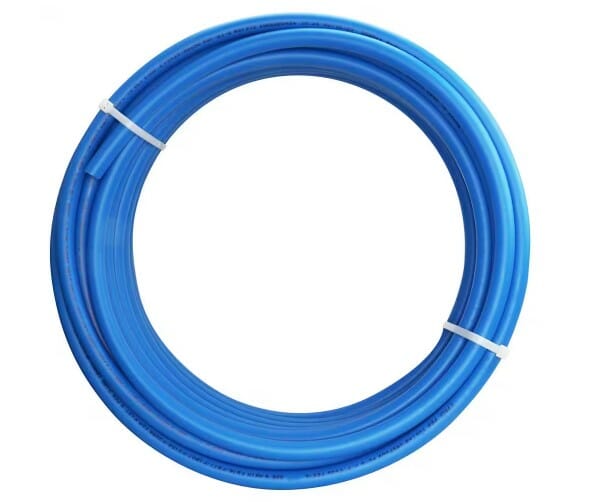When it comes to PEX (cross-linked polyethylene) pipes, it’s essential to protect them from exposure. Exposed PEX pipes are vulnerable to various external factors, including temperature changes, UV rays, and physical damage. Neglecting the protection of these pipes can lead to costly repairs and potential plumbing disasters. In this article, I will provide you with a step-by-step guide on how to cover and insulate exposed PEX pipes effectively. By following these guidelines, you can safeguard your plumbing system and extend the lifespan of your PEX pipes.
PEX Pipes and their Vulnerability
Before we delve into the process of covering exposed PEX pipes, it’s crucial to understand what PEX pipes are and why they require protection. PEX pipes are flexible plastic pipes commonly used in plumbing systems due to their durability and resistance to corrosion. However, when exposed to external elements, PEX pipes can face significant risks.
Exposed PEX pipes are susceptible to temperature changes, especially freezing temperatures. When water freezes inside the pipes, it expands and can cause them to burst, resulting in water damage and costly repairs. Additionally, PEX pipes can deteriorate when exposed to prolonged UV radiation, leading to degradation and reduced functionality. Furthermore, physical damage from accidental bumps or impacts can weaken the pipes and compromise their structural integrity. By protecting exposed PEX pipes, you can mitigate these risks and ensure the long-term reliability of your plumbing system.
Step-by-Step Guide to Covering Exposed PEX Pipes

Now that you have your covering material and know where protection is needed, let’s walk through the step-by-step process of covering exposed PEX pipes:
- Gather the necessary tools and materials: Collect the covering material of your choice, a measuring tape, a utility knife, and any additional fasteners or adhesive required for installation.
- Measure and cut the covering material: Using a measuring tape, determine the length of the exposed pipe sections. Carefully cut the covering material to fit these measurements, ensuring a snug and secure fit.
- Clean the surface of the PEX pipes: Before applying the covering material, clean the surface of the pipes to remove any dirt, dust, or debris. This step ensures optimal adhesion and a clean installation.
- Install the covering material: Slide or wrap the covering material onto the exposed PEX pipes. Ensure that it fully covers the entire section, leaving no gaps or exposed areas. The material should fit tightly to provide effective protection.
- Secure the covering material: Depending on the type of covering material, secure it in place using appropriate fasteners or adhesive, if required. This step will prevent the covering from slipping or becoming loose over time.
- Inspect for gaps or loose sections: After installation, carefully inspect the covered PEX pipes for any gaps, loose sections, or areas that need adjustment. Make any necessary modifications to ensure complete coverage and protection.
- Repeat the process for all exposed PEX pipe sections: Go through the same steps for each exposed section of PEX pipe in your home, ensuring that all vulnerable areas are adequately covered and protected.
By following these steps, you can effectively cover and protect your exposed PEX pipes, reducing the risk of damage and ensuring the longevity of your plumbing system.
Evaluating Exposed PEX Pipes
To get started, let’s identify the areas where you have exposed PEX pipes in your home. Common locations include basements, crawl spaces, and utility areas. Begin by conducting a thorough inspection of these areas, paying close attention to the pipes visible to the naked eye. Look for pipes running along walls, ceilings, or near windows. Identifying the exposed sections will help you determine the extent of protection required and prioritize the areas that need immediate attention.
During the evaluation, keep an eye out for signs of potential risks. Look for any signs of physical damage, such as dents or cuts on the pipes. Examine the surrounding environment for any indications of excessive UV exposure or areas prone to temperature fluctuations. By evaluating your exposed PEX pipes, you’ll have a better understanding of the protection measures needed to safeguard them effectively.
Selecting the Right Covering Material
Now that you’ve assessed the vulnerability of your exposed PEX pipes, it’s time to select the appropriate covering material. Several options are available, each with its advantages and considerations. Let’s explore a few popular choices:
- Pipe Insulation: Pipe insulation is a cost-effective solution that provides thermal protection to the exposed PEX pipes. It typically comes in foam or rubber sleeves that can be easily slipped onto the pipes. Pipe insulation helps regulate temperature and prevents freezing in cold climates.
- Pipe Sleeves: Pipe sleeves are rigid coverings that provide excellent physical protection for exposed PEX pipes. Made of materials like PVC or metal, these sleeves shield the pipes from accidental impacts or damage caused by nearby objects or construction activities. Pipe sleeves are ideal for areas where pipes are at risk of physical harm.
- Heat-Resistant Tape: Heat-resistant tape is a versatile solution that offers both insulation and protection to exposed PEX pipes. This adhesive tape wraps securely around the pipes, providing an additional layer of insulation against temperature changes. Heat-resistant tape is particularly useful for pipes in tight or irregular spaces.
Consider factors such as cost, ease of installation, and durability when selecting the right covering material for your exposed PEX pipes. If you’re uncertain about the best option for your specific needs, consult with a plumbing professional to ensure you make an informed decision.
Additional Tips for Protecting Exposed PEX Pipes
In addition to covering your exposed PEX pipes, there are a few extra measures you can take to enhance their protection:
- Proper insulation: Insulating your pipes is crucial, especially in colder climates. Insulation provides an extra layer of protection against freezing, reducing the risk of bursting pipes. Consider using foam pipe insulation or heat tape specifically designed for cold weather conditions.
- UV-resistant covers or shields: If you have outdoor exposed PEX pipes, consider installing UV-resistant covers or shields. These protective barriers shield the pipes from harmful UV rays, preventing degradation and potential damage.
Remember, prevention is key when it comes to protecting your plumbing system. By implementing these additional tips, you can further safeguard your exposed PEX pipes and minimize the chances of costly repairs.
Conclusion
In conclusion, protecting your exposed PEX pipes is vital for the longevity and functionality of your plumbing system. By understanding the vulnerability of PEX pipes and evaluating the extent of exposure in your home, you can take appropriate measures to safeguard them. Selecting the right covering material and following a step-by-step installation process will ensure comprehensive protection against temperature changes, UV rays, and physical damage. Additionally, considering proper insulation and installing UV-resistant covers or shields for outdoor pipes will further enhance their protection.
Don’t wait for plumbing issues to arise—take proactive steps to cover and insulate your exposed PEX pipes. By investing a little time and effort now, you can save yourself from potential headaches and costly repairs down the line. Remember, a well-protected plumbing system leads to a happy and stress-free homeowner.
